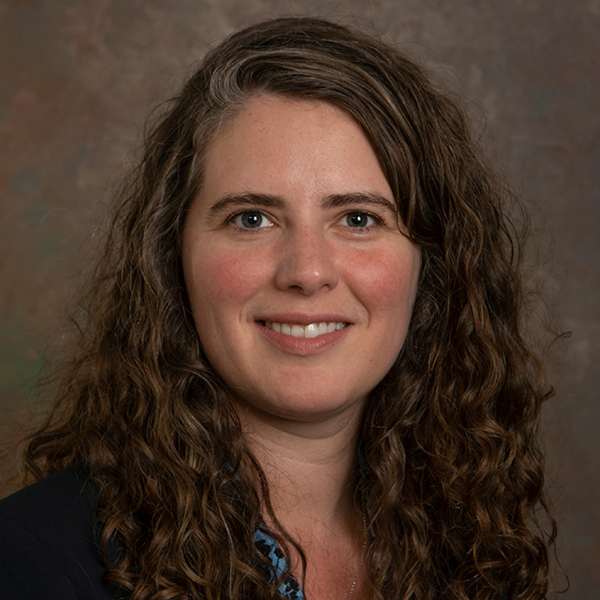School of Education
Research Spotlight: Sarah Curtiss

University of Delaware assistant professor explores the tensions between hopes and expectations in vocational planning for autistic young adults
With graduation season around the corner, many autistic high school and college seniors may feel a unique tension between their hopes—what is possible—and their expectations—what is probable—when it comes to their future careers. Autistic youth face so many barriers to employment that one third of young adults on the autism spectrum are not employed in their twenties. Those who do find employment are likely to be in unskilled jobs with low wages, even if they attended college.
In a new article published in the Journal of Autism and Developmental Disorders, University of Delaware Assistant Professor Sarah L. Curtiss and her co-authors explore the tensions between the hopes and expectations of vocational planning from the perspectives of autistic young adults, parents and practitioners. Their study reveals common themes among participants’ responses, including the constraints of ableist perspectives among employers, the challenges of “finding the sweet spot” when planning for a future career and the disconnect between autistic youth’s needs and available resources, among others. In light of these findings, the authors advocate for interventions that offer individualized support, embrace neurodiverse identities and facilitate collaborative decision-making.
“The youth in our study were very practical—trying their best to balance their interests, wanting to make a difference and anticipating difficulties with work-life balance,” said Curtiss, who specializes in special education within UD’s College of Education and Human Development. “There are sometimes erroneous assumptions that autistic youth lack the skills to work, but our study sheds light on the barriers they face.”
Tensions between hopes and expectations
In their study, Curtiss and her co-authors held focus groups with participants in the Midwestern United States, including autistic young adults between the ages of 16 and 24, caregivers and practitioners. The research team asked participants about their hopes for the youth’s future career, expectations for the youth’s career prospects, their roles in the youth’s career development and sources of support and challenges.
One of the common themes in the participants’ responses was the influence of either disability acceptance or ableism—discrimination against individuals with disabilities—on their hopes and expectations. In recent years, awareness and acceptance of neurodiversity—how some individuals’ brains process information differently—has increased. But employers are still hesitant to offer meaningful jobs to autistic people.
“I think that it’s really difficult to find employers that are willing to give neurodiverse adults a chance,” said a parent participant. “If they struggle in some of the social realms and the communication realms, it’s really difficult to get them convinced that this person can do a higher-level job.”
“For this reason and others, some parents in our study struggled with the idea that their hopes for their children’s futures were too high, while others held hopes and expectations that were too low,” Curtiss said. “For example, one parent affirmed their high school senior’s interests in screenwriting but expressed doubt about whether a career in television or film was possible.”
Many participants also felt a disconnect between the autistic youth’s needs and available resources. For example, one autistic participant worried about their future as a teacher.
“I think the main concern I have is being an autistic teacher because there’s so many things about being autistic that make it very difficult to function on a daily basis. . . . there aren’t that many resources out there about any autistic teachers,” the participant said.
Similarly, one parent emphasized that the state vocational rehabilitation (VR) services—which help people with disabilities prepare for, obtain or maintain employment—failed to address the specific needs of their autistic child.
“It took [the VR program] weeks to find a [support provider],” said one parent participant. “She called out a lot. So, [my son] couldn’t go to work, which try to explain [that] to a kiddo that has a schedule and a routine. And now all of a sudden, you’re changing it, wait a minute. I was supposed to go to work. So that would set off [distressing] behaviors.”
Despite the parent’s interest in communication and collaboration, the service provider failed to recognize the youth’s needs for routine and schedule. Rather than adopting an individualized approach, the system favored a standardized service approach, undermining positive developmental and vocational outcomes.
Resolving tensions
Curtiss and her co-authors emphasize that resolving these tensions in vocational planning requires a comprehensive and collaborative effort among autistic youth, their parents, practitioners and policymakers. Tailored support for each autistic individual, an acceptance of neurodiverse identities and transparent, collaborative decision-making is crucial.
“One interesting thing we identified was how important labor markets were to individual opportunities and decision-making,” Curtiss said. “For example, one of the practitioners in our study noted that low unemployment rates tend to help employers be more open to hiring people that they haven’t considered in the past. The importance of these macro-level forces highlights the need for autism advocates at the table when drafting labor policy.”
April is Autism Acceptance Month. To learn more about CEHD research in disability and inclusion, visit its research page. To learn more about the services UD provides to individuals with disabilities and their families, visit CEHD’s Center for Disabilities Studies (CDS). Among its many programs and services, CDS offers the Career and Life Studies Certificate program for individuals with intellectual disabilities and the Spectrum Scholars program, a comprehensive college-to-career initiative for UD autistic students.
Article by Jessica Henderson. Photo Illustration by Shelly Silva.
About Sarah Curtiss
Sarah Curtiss is an assistant professor specializing in special education in CEHD’s School of Education. Her research explores how to develop programs for autistic youth that foster resilience, facilitate positive development and are grounded in lived experience. Throughout her research, Dr. Curtiss situates autistic youth in context—in families, communities, schools, service systems, and cultures. This research includes projects on human sexuality education, social skills, family mealtimes and the transition to adulthood.
Disability and Inclusion Faculty at CEHD
Curtiss’s research complements the work of CEHD faculty studying disability and inclusion including Tia N. Barnes, Al Cavalier, Stephanie Del Tufo, Steven M. Eidelman, Laura Eiseman, Allison Jackson, Nancy C. Jordan, Sarah B. Mallory, Beth Mineo, Jessica Namkung and Kristen Ritchey, as well as CEHD’s Center for Disabilities Studies.




